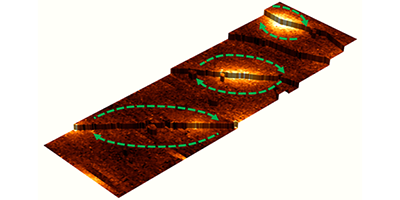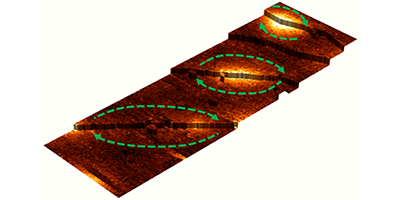Ultrathin Superconductors Take a Step Up
Metal films that are only an atom or two thick can become superconducting at temperatures near absolute zero. However, in these two-dimensional materials, small imperfections such as one-atom-thick elevation changes (“atomic steps”) may end up blocking the flow of supercurrents. A new study of superconducting vortices in metal films provides the first direct evidence that the atomic steps behave like Josephson junctions—structures made of two superconductors separated by a barrier. The results imply that atomic steps allow supercurrents to flow at a restricted rate, which could make them useful as functional elements in future 2D superconducting devices.
In 2010, physicists found that metal films adsorbed on so-called silicon surface reconstructions could behave as superconductors. The discovery came as a surprise, since quantum fluctuations were expected to disrupt superconductivity in 2D structures. A great deal of research is now devoted to testing how robust this superconductivity is. Atomic steps and other surface defects typically have little effect on bulk (3D) superconductors, but they clearly could influence the behavior of these ultrathin materials.
Takashi Uchihashi of the National Institute for Materials Science in Tsukuba, Japan, and his colleagues performed scanning tunneling microscopy measurements of indium films on reconstructed silicon surfaces. Specifically, the team studied the formation of superconducting vortices—supercurrents traveling around a closed loop that appear in certain superconductors when an external magnetic field is applied. The researchers observed that most of the vortices in the film were circular with a nonsuperconducting inner core. However, the vortices located along atomic steps were elliptical in shape, and their cores were superconducting. Numerical simulations showed that this behavior was consistent with the atomic steps providing a Josephson coupling between different terraces of the film.
This research is published in Physical Review Letters.
–Michael Schirber





